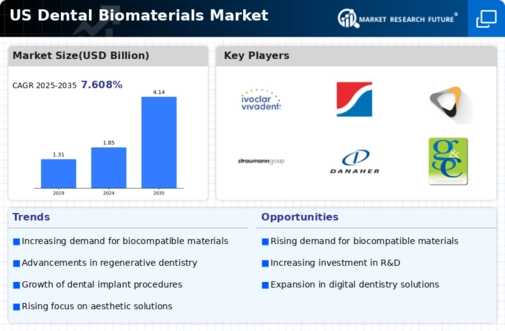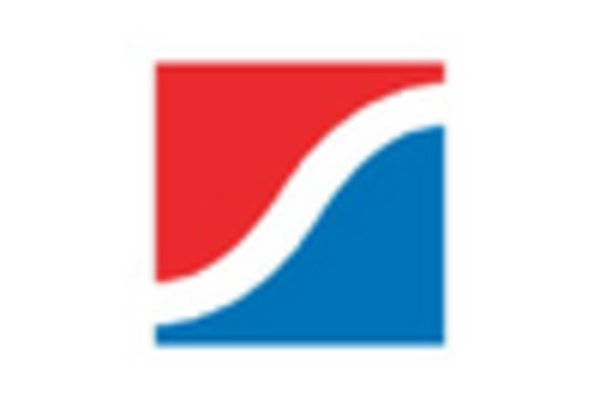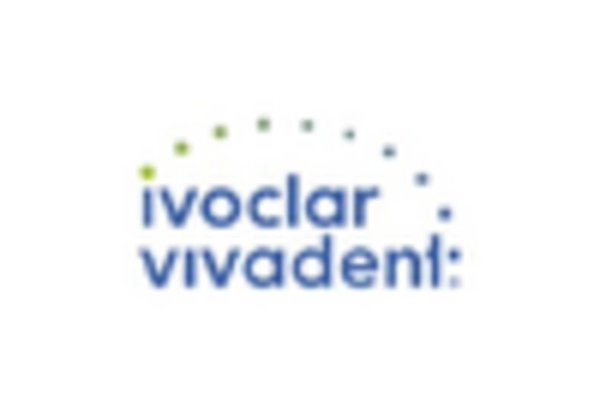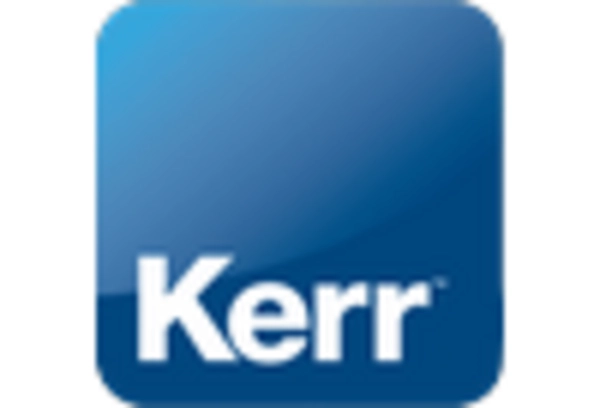Rising Geriatric Population
The increasing geriatric population in the US is a pivotal driver for the dental biomaterials market. As individuals age, they often experience dental issues that necessitate restorative procedures, thereby elevating the demand for biomaterials. According to the US Census Bureau, the population aged 65 and older is projected to reach 80 million by 2040, which represents a substantial market opportunity. This demographic shift indicates a growing need for dental implants, crowns, and other restorative solutions, all of which rely on advanced biomaterials. The dental biomaterials market is likely to benefit from this trend. Older adults seek durable and effective solutions to maintain oral health and aesthetics.
Rising Awareness of Oral Health
There is a notable increase in public awareness regarding the importance of oral health, which is positively impacting the dental biomaterials market. Educational campaigns and initiatives by dental associations are informing the population about the benefits of maintaining good oral hygiene and seeking timely dental care. This heightened awareness is leading to an increase in dental visits and procedures, thereby driving demand for various biomaterials used in restorative and cosmetic dentistry. As consumers become more informed about their oral health options, the dental biomaterials market is expected to expand, reflecting a shift towards proactive dental care.
Increased Focus on Preventive Care
The growing emphasis on preventive dental care is driving the dental biomaterials market. Patients are increasingly seeking solutions that not only address existing dental issues but also prevent future complications. This trend is reflected in the rising popularity of biomaterials that promote remineralization and tissue regeneration. The American Dental Association reports that preventive care can reduce the need for more invasive procedures, thereby fostering a market for biomaterials that support long-term oral health. As dental professionals prioritize preventive strategies, the demand for innovative biomaterials is likely to rise, further propelling the growth of the dental biomaterials market.
Technological Innovations in Dentistry
Technological advancements in dentistry are significantly influencing the dental biomaterials market. Innovations such as 3D printing and computer-aided design (CAD) are enhancing the precision and customization of dental restorations. These technologies allow for the creation of tailored biomaterials that meet specific patient needs, thereby improving treatment outcomes. The market for dental biomaterials is expected to grow as these technologies become more integrated into dental practices. Furthermore, the introduction of new materials, such as bioactive glass and nanocomposites, is expanding the range of options available to dental professionals. This evolution in technology suggests a promising future for the dental biomaterials market.
Regulatory Support for Advanced Materials
Regulatory bodies in the US are increasingly supporting the development and approval of advanced dental biomaterials. The Food and Drug Administration (FDA) has streamlined processes for the evaluation of new materials, which encourages innovation within the dental biomaterials market. This regulatory environment fosters research and development, allowing manufacturers to introduce novel products that meet stringent safety and efficacy standards. As a result, the market is likely to see a surge in the availability of cutting-edge biomaterials that enhance patient care. The proactive stance of regulatory agencies may thus serve as a catalyst for growth in the dental biomaterials market.

















Leave a Comment